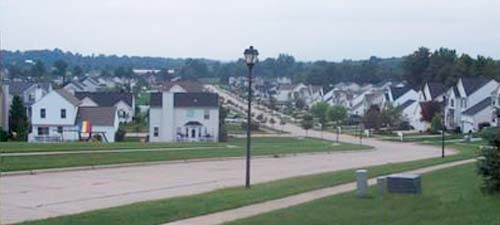Ohio Flood - 1969
The most devastating summer flooding in Ohio history struck north-central Ohio on Independence Day.
Severe thunderstorms moved from Lake Erie into North Coast communities at about 8 PM on July 4th, 1969. This line of storms became nearly stationary for eight hours from Toledo southeastward through Fremont, Norwalk, Ashland, and Wooster.
The heaviest rain of July 4-5, 1969 (10-14 inches), fell in a band heading southeast from Ottawa County to Wayne and Holmes Counties. Massillon was just east of that area but suffered its fair share with 6 or more inches of rain. Most sections of Ashland and Wayne Counties were flooded and isolated for two days after the flood. Killbuck Creek in Holmes County rose 20 feet to its highest level known.
On the flat, poorly drained land of Ottawa and Sandusky Counties, fields were flooded as far as the eye could see. Record floods were reached on the Huron River, the Vermilion River, and the Black River
Most sections of Ashland and Wayne Counties were flooded and isolated for two days after the flood. Killbuck Creek in Holmes County rose 20 feet to its highest level known. The streets of Mansfield were under four feet of water and industries were closed by floodwaters in Youngstown and Canton.
The flooding caused tremendous crop damage. Some farm fields and the farmers that tended them, never recovered. The flooding caused tremendous crop damage. Some farm fields and the farmer that tended them, never recovered.
Flooding, winds up to 100 mph, tornadoes, and lightning caused 41 deaths and injured over 500 people. More than 10,000 homes were damaged and 104 small businesses were destroyed.
It was the scope of the flooding in our area that motivated local citizens to prompt local government that flood control must be implemented. It wasn't just the farm fields that flooded, residential streets and homes also suffered extreme levels of flooding. Although a Steering Committee had filed a Work Plan in 1960 for a regional flood control system, the devastating flood of 1969 underlined just how prone our region was to flooding and that flooding would continue in the future unless something was done to control it.
Unabated floods had to end, and the answer in our area was the creation of the Chippewa Subdistrict.
